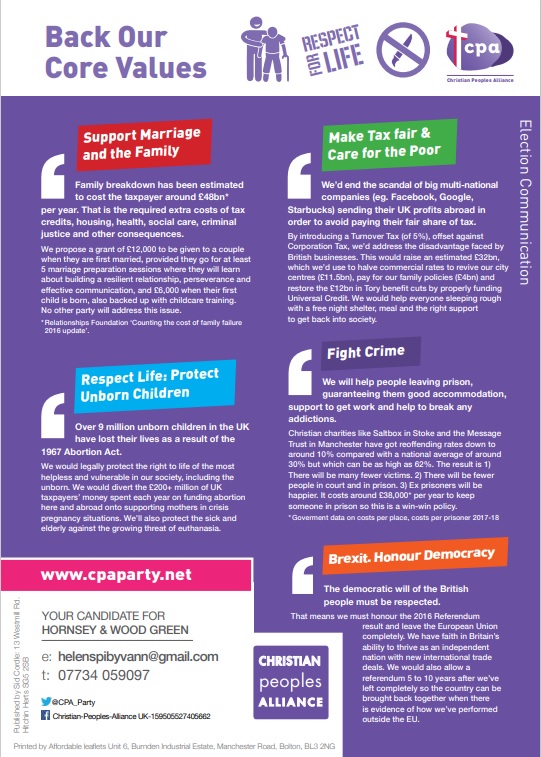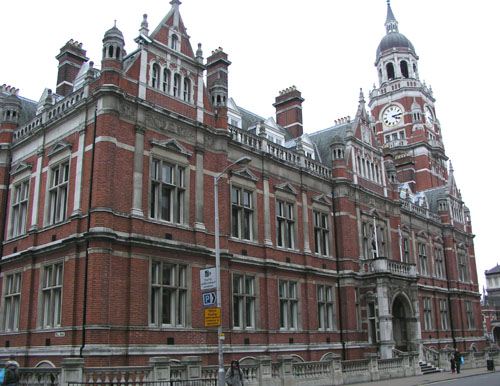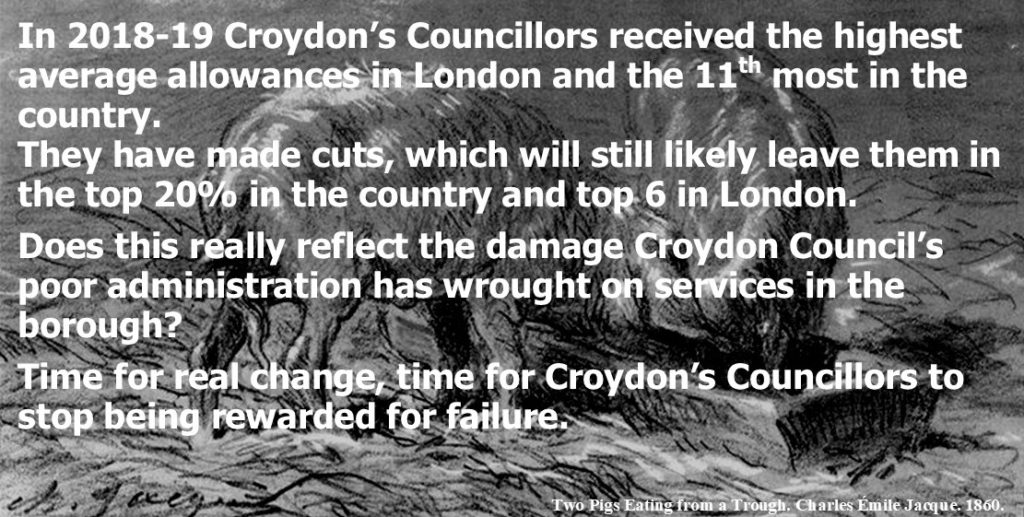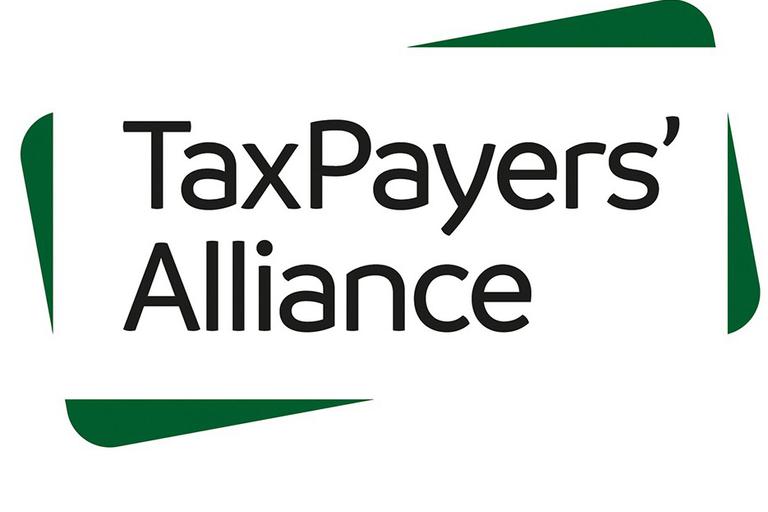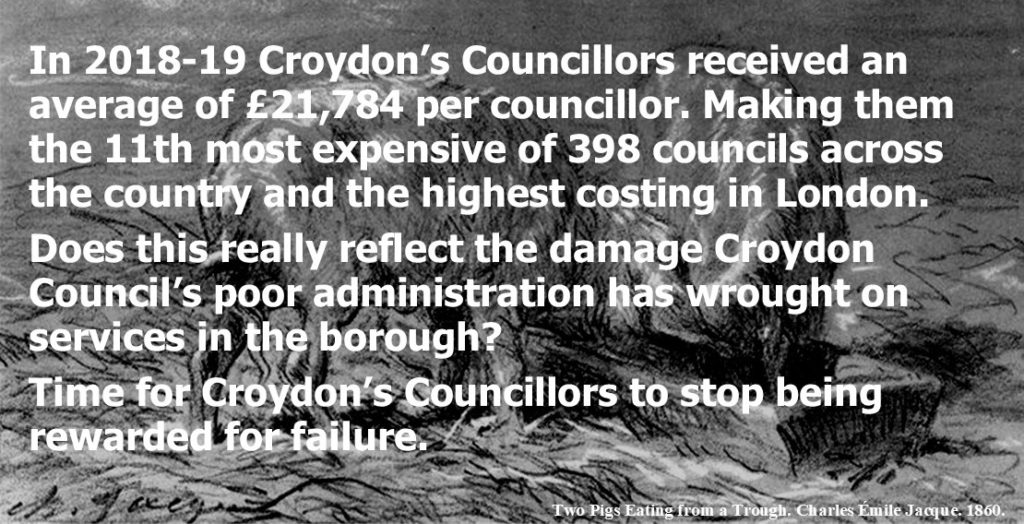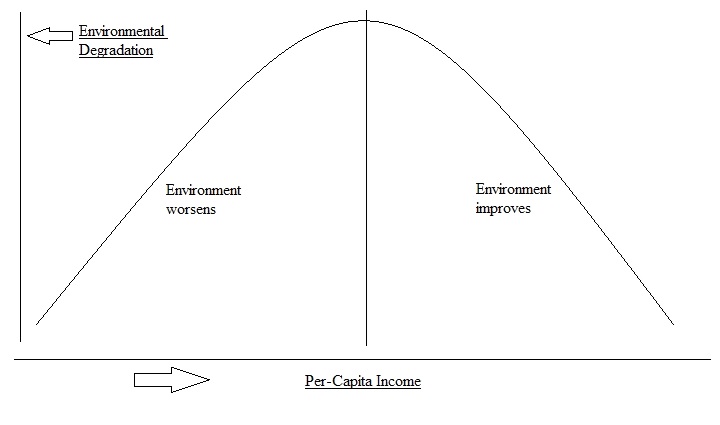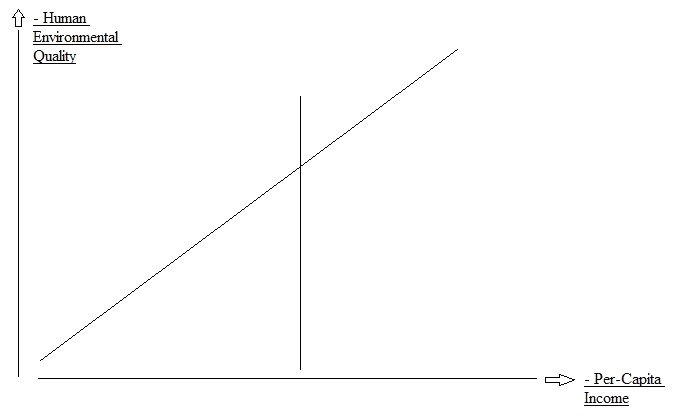
Helen Spiby-Vann has stood 3 times (2015, 2017 and 2019 General Elections) for the Christian Peoples Alliance party in the North London constituency of Hornsey and Wood Green. Vice President of the Party, in 2019 she doubled her votes from the previous election, had a great election video and good write up in the local press. We spoke with Helen about the constituency, London politics, her experiences as a candidate, and her challenges with the state school system.
Helen thank-you for your time.
You have stood 3 times in Hornsey and Wood Green. Can you tell us a bit about the constituency, what makes it special and why you want to represent the area?
Hornsey and Wood Green constituency is buzzing with different types of families from different backgrounds. Where else can you meet people from diverse cultures, age groups and attitudes whilst queueing for a mezze grill? Haringey is the hospitality borough of London.
Another great institution is Pray Haringey. Hearing from community leaders and praying for Haringey. I love the various facets of the local faith communities and I have a tangible affinity with them all. We love family, kids, mums & dads, siblings and grandparents. We empower young people and care for the elderly, infirm and dispossessed. We make sure we teach our children to respect others who are different from ourselves.
A stranger’s perspective can sometimes seem strange so it’s important to carry their burdens, to see through their eyes. In my capacity as a human being, I’ve been a carer, advocated for the elderly, I’ve partnered with Homes for Haringey and hosted a Syrian refugee. I’ve co-founded a food project, done pro-life pavement counselling and worked with children. I’m convinced that religious ethics can inform the common good and enable equality, justice and prosperity for all. When we apply Godly principles we see lives changed for the better.
“It’s inspiring to see how deeply people care about making the world a better place and fighting injustice. We all have this much in common – even if we disagree about how best to do it”
Since becoming a regular candidate what’s surprised you most about getting involved in politics?
A couple of surprises. Firstly, I’m surprised at how emotionally driven voting has become. Voters are disillusioned by intellectual rationale and persuaded by emotional discernment. In other words, when the experts disagree, we lean on our feelings. People of faith seek God’s guidance.
Secondly, I’m always surprised by the depth of sincerity of candidates and their supporters. It’s inspiring to see how deeply people care about making the world a better place and fighting injustice. We all have this much in common – even if we disagree about how best to do it. In the words of Samwise Gamgee “There’s some good in this world, Mr. Frodo, and it’s worth fighting for.”
Do you have any fun or interesting stories from the campaign trail?
One of my first ever hustings turned out to be an epic event of Biblical magnitude. After having been declined a place on the panel, I was summoned from the back to sit on the top table after an unlikely episode which you couldn’t make up if you tried.
This turn of events happened when a burly Hoi Polloi1 with a battery pack, speaker and megaphone crashed his way to the front and demanded a place on the top table. The community were up in arms, some for and others against. The padre moderator swiftly called for the church steward to escort the strapping figure out. Then a diminutive lady appeared and it was clear that she was no match. This exacerbated the tension. Chaos, ensued, shouting, mobbing and whistle blowing.
In a stroke of divine intervention, the padre was able to take back control when another man loudly chastised the mob affirming rights of candidates to give representation. It all settled down and the Christian and the Hoi Polloi were accredited as official panelists.
One blogger who happened to be there wrote about my closing statement: ‘Spiby-Vann’s closing statement discussed the need for a “new moral vision” and to “promote godliness.” She said “marriage is the safest setting for sexual intercourse” and that “marriage demonstrates a man loves a woman – he pledges to remain faithful and she pledges to take care of him.” She then described how marriage protects women. I think this level of Christian fundamentalism managed to shock the relatively godless and liberal residents of Crouch End.’ Amen.
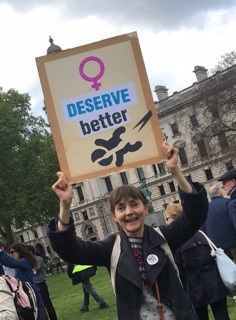
“It seems like an oxymoron that a shadow minister of faith would be fired for advocating for people of faith. It supports the rumour that Labour exploit the faithful, treating them as religious tokens”
We have the London Mayoral elections coming up in May 2021. What are your thoughts on Mayor Khan and London’s politics more generally?
On a positive note, Mayor Khan is supportive of protecting the environment. However, this protection from pollution doesn’t stretch to in utero. I was disappointed that Mayor Khan didn’t attend the March for Life 2019. Accepted, for many, this would be the principled choice.
I love engaging with the various political perspectives in London. Respect is key and free speech is precious. By understanding other people’s viewpoints we may discover a dearly longed for solution. Sadly Janet Daby recently resigned as Labour’s shadow faith minister over comments she had made in support of freedom of conscience. It seems like an oxymoron that a shadow minister of faith would be fired for advocating for people of faith. It supports the rumour that Labour exploit the faithful, treating them as religious tokens.
Also close to my heart are women’s rights. My message to women and girls – our value comes from God not from our physical appearance – we are fearfully and wonderfully made. Negative thoughts tell us our identity is intertwined with what we do and who we look like. Comparing ourselves with others is a habit hard to ax.
Life is not straight forward. I know a lady who woke up one frozen December morning at the crack of dawn to take her dog for a walk. As she walked down the lane she saw a person lying lifeless at the side of the road in the snow. A thought passed through her pained mind – could this be the victim of a hit and run joy rider. Sadly she was right. A transient moment of irresponsible pleasure for one, turned into a tragedy for another. So it is with exploitation of women and girls and abortion.
There’s a reason why we have driving licenses, there’s a reason why we have marriage licenses. It’s to protect human rights, especially for the most vulnerable. There’s only one way into this world and for humans travelling on that path, their mother is dearly beloved. It’s an indictment on our society that mothers are encouraged to look upon the new person arriving with such contempt and lured into putting them down (mifepristone works by starving baby of nutrients and oxygen, misoprostol aborts the corpse).
For those who are still reading even though you disagree or find my opinion conceptually incomprehensible, thank you for persevering. You are great. It is concerning that people with very different views never get to meet their opposites. We only get exposed to one view and think the other is offensive, hateful, bigoted, right wing, Marxist, extremist or ridiculous. When I find myself saying ‘I just can’t understand why they think that’, it’s time to meet people who can help me understand. We may still disagree, but we find respect and dignity when we try to understand each other.
You have had some challenges as a parent with the teaching of Relationship and Sex Education (RSE) at your son’s school. Can you tell us a bit about that?
Yes it’s true – over the past decades of parenting, I have never been consulted properly regarding Relationship & Sex Education (RSE). And even now, when it’s mandatory, parents’ views are still being sidelined. Back in 2015 when my youngest was in year 5, I couldn’t make the once-per-year RSE content preview. Despite my requests, no other time or access was permitted.
In 2016 when my youngest was in year 6 parents were once again invited to the once-per-year RSE content preview. The (usually accommodating) headteacher explained she would only be showing samples as time permitted and would be able to show the materials in full, on request (despite requests, this never happened). Ahead of her presentation, she asked if there were any questions. I looked round at the 2 other mums and one dad in attendance and asked ‘Do you cover the importance of marriage and adult sexual relationships and if not, do you cover sexually transmitted infections (STI’s)?’
At this point the one dad walked out and the headteacher explained ‘We don’t stress marriage because our children come from many different families. But they do learn about sexual relationships but not about STI’s till much later.’ As if this rationale (on down-playing marriage) wasn’t spurious enough, the materials presented healthy sex as being a response to chemical sensations with no reference to commitment, risks, rights or responsibilities. In other words, schools have been acquiescing to fabricated ideas and ideology rather than following guidance, facts and best practice.
Autumn 2016, my son started secondary school. For the past 18 months, I have been submitting my parental feedback with respect to RSE from the protected characteristic of religious backgrounds. Under the new Regulations schools are required to consult with parents in planning the curriculum. This requirement is spotlighted in the Guidance issued 24th September 2020: ‘You must engage parents and carers about your relationships and sex education curriculum. It is important that you set out your approach to the subjects fully and clearly2.’
However, so far as I understand, none of my suggestions have been taken on board. I have removed my son from these classes until the school is able to make it inclusive for religious backgrounds and we are working together to resolve these issues.
“we must support mum and dad and strengthen marriages. Children benefit from the joint resources, finances and shared experiences of married parents. This joint capacity enables parents to be involved in their child’s schooling”
More widely what are your thoughts on state education?
The most popular and successful state schools tend to have a few things in common: My no. 1 is encouraging parental involvement in the child’s education (parents checking homework timetables and being interested in weekly tests). And for parental involvement to be viable, we must support mum and dad and strengthen marriages. Children benefit from the joint resources, finances and shared experiences of married parents. This joint capacity enables parents to be involved in their child’s schooling.
When I was a single working mother, parental involvement in my child’s schooling was much harder. Too often children of single parent families get the short straw when it comes to educational outcomes3. Breakfast clubs offering healthy meals like porridge oats, Weetabix and fruit (rather than Rice Krispies or Cornflakes) and afterschool clubs with homework supervision or individual tuition, can bridge that gap.
One thing all pupils agree on is that disruptive classmates handicap their education. One radical panacea is to invite parents of distracting pupils to sit in one of their child’s classes and repeat the prescription when necessary.
Good classroom discipline is key. It improves student (and teacher) satisfaction, wellbeing and enables better academic, extra curricular and pastoral results.
Other methods which contribute to equality of educational outcomes include:
- Streaming (with smaller class sizes at the lower end – and therefore more attention for struggling pupils)
- STEM subjects taught in single sex classes
- Speciality places offered for talent. This method works well because it attracts an array of pupils who raise aspirations across the school community.
Do you have any advice for anyone who has concerns about their children’s education?
For parents who are concerned about their child’s education, you are in good company. It’s important to be concerned. But what can we do with our concerns to generate positive change?
Firstly, keeping in touch with teachers is important (don’t wait till parents’ evening). Schools have homework diaries with space for parents to fill in. Your child may not thank you for it at the time but teachers will. It’s really important to be involved.
Choosing a school can seem like an insurmountable challenge. Everyone wants a good, safe and aspirational school for their children. Every child is different, whether they would benefit from cosy, big, academic, faith or disciplined, there’s lots of different types of schools and often they cater for different needs and talents. Visit as many as you can and throw the net wide. Private schools offer lots of scholarships and bursaries. They have a reputation for converting 6’ & 7’s into 9’s.
In addition, it’s important for children to be part of an activity based community outside the school (eg: sports, arts, technical, music or scouts). A serious friendship based hobby gives them confidence and stamina to embrace daily challenges at school.
Don’t be put off considering different schools, even if a child just wants to go to the same school as their friends. Trust your parental instinct. In year 5, children don’t want to leave their primary. But by Christmas in year 7, many can’t imagine going back.
“State schools took the view that if one child doesn’t have IT, then the rest can’t use it (this is a common theme in state education). It would have been easier to source IT for those without than to deprive them all”
We have had a second lockdown and gone into a Tier System. What are your thoughts on the government’s handling of Covid?
I believe the government has overstretched it’s reach. This is particularly apparent with churches. Early in April lockdown, it was considered safer to go to Poundshop than to church. By September, churches were open having invested greatly in risk assessments and adaptations. While Tier 2 was in place, they were still open but then downgraded with Tier 3. This was very unreasonable as churches had invested in the safety measures to prevent the spread.
State school children were short changed during school lockdown. While private schools worked hard to usher in remote classes on Teams and kept tabs on attendance, making sure IT was available for those without. State schools took the view that if one child doesn’t have IT, then the rest can’t use it (this is a common theme in state education). It would have been easier to source IT for those without than to deprive them all. State schools were thus handicapped4. Parents were juggling home schooling and home working. Teachers tried to keep connected with their increasingly remote pupils by uploading, downloading and emailing. Doing their best to help with academic as well as pastoral issues that arose because the kids were off school with no structure and no motivation.
It’s not accidental that kids are more motivated when they see other kids doing it. During school lockdown, digital classrooms enabled kids to hear and see other kids (or at least their avatars) and none could say ‘It’s not fair, I’m the only one doing this school work. Why should I?’
Exam classes could have continued in schools with social distancing, masks and santiser. Exams by nature are socially distanced and should have continued. This would have prevented the results injustices and uni places fiasco.
However, sometimes less government intervention is better. In April 2020, It was inspiring to see philanthropy thriving, nationwide encouragement of NHS and keyworkers, free public transport and handouts for food banks.
Other lessons in hindsight:
- Covid testing with results ready in half an hour at airports, weddings, funerals, care homes and hospices. No-one should be prohibited from seeing their loved ones who are terminally ill.
- Risk to different demographics issued in a form that the ordinary person can grasp: ‘1 in 30 people of this age group who contracts the virus, dies from it.’
- On marriages: limiting attendance and social distancing is one thing, but banning marriages outright is a breach of human rights.
- Earlier use of face masks, thermometers, testing, sanitizer rather than lockdowns.
- More transparency about the demographic that’s allegedly spreading Covid-19. Focus on supporting this group rather than sweeping restrictions.
- Pills-by-post home abortions: The government was misled by abortion providers regarding the significance of an in-person assessment to ascertain fetal age5. And
- babies who were old enough to survive independently (and feel pain6), have been illegally killed7 by starvation.
Should you be returned at the next election to represent the good people of Hornsey and Wood Green, what’s one law you would like to benefit the nation, and something you would like to do to benefit your constituents?
This is a great question – my suggestion would benefit the UK both on a national level and a local level. If I was to say this policy would:
- Save the nation £51Bn (for comparison we spent £87Bn on education and £37Bn on defence in 2017)8
- Significantly reduce the number of people in trouble with police or in prison9
- Improve the nation’s wellbeing and health10
- Reduce (or eradicate) STIs which have been on the increase for decades11
- Cut rates of exploitation of women and girls, prostitution and pornography
- Reduce educational underachievement significantly12
- Cut rates of poverty by significant percentage13
- Reduce homelessness14 and pressure on housing
- Improve children and young people’s mental health15
I could go on… The panacea for all these social woes can be summed up in 4 words ‘marriage as God intended’. Or as I like to call it, ‘the doting husband covenant’: to have and to hold from this day forward, for better for worse, for richer for poorer, in sickness and in health, to love and to cherish, till death us do part. And not forgetting men’s core need, marriage is the only relationship that recognises sex as central to the covenant (for cohabitees and civil partnerships it’s an added extra). How do we persuade the people of the UK to once again take advantage of this ancient covenant and unlock the full package of societal benefits?
I recommend the introduction of grants of £12,000 for first-time marriages on the condition couples attend marriage training (including conflict resolution and building resilient relationships). Faith communities have been taking Biblical marriage seriously for years and we see the majority of married couples staying together16.
Let’s hope that the new-found sobriety for family life, meaningful relationships, health and nature, can usher in a new era where marriage as God intended, is once again the rock upon which our nation is built.

The CPA can be found on Twitter at https://twitter.com/CPA_Party, and Facebook at https://www.facebook.com/www.cpaparty.net/.
Notes:
- Hoi Polloi is/was a small political party
- https://www.gov.uk/guidance/teaching-about-relationships-sex-and-health
- https://www.centreforsocialjustice.org.uk/core/wp-content/uploads/2019/04/CSJJ6900-Family-Report-190405-WEB.pdf PDF page
7 (numbered p5) - https://teachertapp.co.uk/are-primary-schools-really-opening-for-more-year-groups-today/
- https://christianconcern.com/ccpressreleases/undercover-investigation-exposes-diy-abortion-service-as-unsafe-and-crossing-legal-boundaries/
- https://www.dailymail.co.uk/news/article-8281321/Landmark-legal-bidforce-clinics-tell-women-truth-involved-abortion.html and https://jme.
bmj.com/content/medethics/46/1/3.full.pdf - https://www.thesun.co.uk/news/11690506/police-probe-death-of-unborn-baby-after-woman-has-illegal-abortion-by-post-at-28-weeks-fourweeks-past-limit/
- https://marriagefoundation.org.uk/cost-family-breakdown/
- https://www.centreforsocialjustice.org.uk/core/wp-content/uploads/2019/04/CSJJ6900-Family-Report-190405-WEB.pdf PDF page
7 (numbered p5) - https://onlinelibrary.wiley.com/doi/abs/10.1111/j.1741-3737.2006.00280.x
- https://www.bbc.co.uk/news/health-48509969 and http://resources.hwb.wales.gov.uk/VTC/2012-13/22032013/hsc/eng/unit_3/unit_3-revision/hsc_u2_rev-key-acts.htm
- https://www.centreforsocialjustice.org.uk/core/wp-content/uploads/2019/04/CSJJ6900-Family-Report-190405-WEB.pdf PDF page
7 (numbered p5) - (page nos. 26, 27, 63) https://assets.publishing.service.gov.uk/government/uploads/system/uploads/attachment_data/file/285389/Cm_8781_Child_Poverty_Evidence_Review_Print.pdf and https://marriagefoundation.org.uk/research/the-long-term-effects-of-marriage-on-social-mobility/
- https://www.centreforsocialjustice.org.uk/core/wp-content/uploads/2019/04/CSJJ6900-Family-Report-190405-WEB.pdf PDF page
7 (numbered p5) - https://marriagefoundation.org.uk/research/mummys-boys-daddys-girls-and-teenage-mental-health/
- https://lovewiseonline.org/whats-the-point-of-marriage/#references

